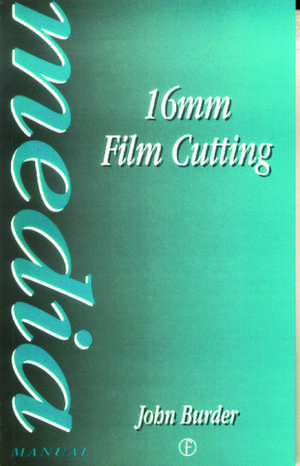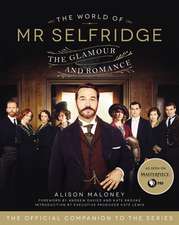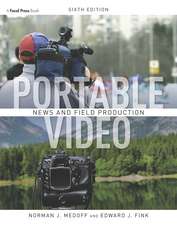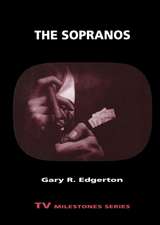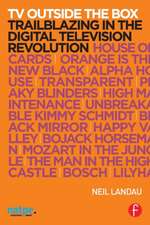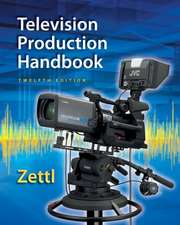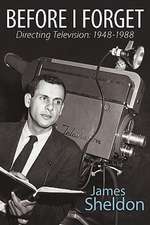16mm Film Cutting
Autor John Burderen Limba Engleză Paperback – 20 ian 1976
The practical side of the editor's job is clearly described and illustrated; breaking down rushes and making a simple join, identifying shots, first assembly, avoiding errors, preparing special effects, instructing the labs, compiling sound tracks and all the other stages in producing the final film.
16mm Film Cutting is an indispensable aid to editors and assistants working in all areas of 16mm film production.
| Toate formatele și edițiile | Preț | Express |
|---|---|---|
| Paperback (1) | 449.31 lei 6-8 săpt. | |
| Taylor & Francis – 20 ian 1976 | 449.31 lei 6-8 săpt. | |
| Hardback (1) | 1014.87 lei 6-8 săpt. | |
| Taylor & Francis – 11 iul 2017 | 1014.87 lei 6-8 săpt. |
Preț: 449.31 lei
Nou
Puncte Express: 674
Preț estimativ în valută:
85.98€ • 90.18$ • 71.57£
85.98€ • 90.18$ • 71.57£
Carte tipărită la comandă
Livrare economică 01-15 aprilie
Preluare comenzi: 021 569.72.76
Specificații
ISBN-13: 9780240508573
ISBN-10: 0240508572
Pagini: 164
Ilustrații: black & white illustrations
Dimensiuni: 138 x 216 x 11 mm
Greutate: 0.3 kg
Ediția:1
Editura: Taylor & Francis
Colecția Routledge
Locul publicării:Oxford, United Kingdom
ISBN-10: 0240508572
Pagini: 164
Ilustrații: black & white illustrations
Dimensiuni: 138 x 216 x 11 mm
Greutate: 0.3 kg
Ediția:1
Editura: Taylor & Francis
Colecția Routledge
Locul publicării:Oxford, United Kingdom
Public țintă
Professional Practice & DevelopmentCuprins
The Job of Cutting; Chapter 1 Cutting with Safety and Economy; Chapter 2 Cutting Films Shot with Sound; Chapter 3 Cutting Films Shot Without Sound; Chapter 4 Motorised Editing Machines; Chapter 5 Upright and Table Editing Machines; Chapter 6 Multi-track Equipment; Chapter 7 Synchronisers: Types and Uses; Chapter 8 Synchronisers: Accessories; Chapter 9 Joining Film: Temporary Splices; Chapter 10 Joining Film: Permanent Splices; Chapter 11 Animated Viewers; Chapter 12 Sundry Cutting Room Equipment; Chapter 13 Cutting Room Accessories; Chapter 14 Planning Picture sequences; Chapter 15 Identifying and Printing Takes; Chapter 16 Identifying Sound Takes; Chapter 17 The Film in the Camera; Chapter 18 Copying the Original; Chapter 19 Cutting Copies; Chapter 20 Edge Numbers and Film Footage; Chapter 21 Locating Scenes and Takes; Chapter 22 Breaking Down Rushes; Chapter 23 Joining with Tape; Chapter 24 Joining with Cement; Chapter 25 Film Leader; Chapter 26 Making a First Assembly; Chapter 27 Continuity Cutting; Chapter 28 Cutting a Simple Sequence; Chapter 29 Avoiding Continuity Errors; Chapter 30 Optical Effects: Dissolves; Chapter 31 Single Roll Optical Effects; Chapter 32 Ordering Single Roll Optical Dupes; Chapter 33 Optical Effects: Fades and Freezes; Chapter 34 Extending and Fine Cutting the Action; Chapter 35 Changing and Patching Cutting Copies; Chapter 36 Augmenting Original Film; Chapter 37 Negative Cutting: Principle; Chapter 38 Negative Cutting: Checkerboard; Chapter 39 Negative Cutting: Where and When; Chapter 40 Negative Cutting: Optical Effects; Chapter 41 Negative Cutting: A/B Rolls, Cueing; Chapter 42 Negative Cutting: Completing; Chapter 43 Superimposed Titles; Chapter 44 Ordering Superimposed Titles; Chapter 45 Synchronised Sound: Double System; Chapter 46 Synchronised Sound: Single System; Chapter 47 Cutting with Wild Sound; Chapter 48 Planning a Complete Soundtrack; Chapter 49 Preparing Sound Effects Tracks; Chapter 50 Preparing Background Sounds; Chapter 51 Sync Points; Chapter 52 Matching Sound and Picture; Chapter 53 Cutting Sounds and Avoiding Clicks; Chapter 54 Background Sound Loops; Chapter 55 Synchronised Sound and Picture; Chapter 56 Finding and Maintaining Synchronism; Chapter 57 Narration: Pre-Recording, Matching; Chapter 58 Narration: Recording During a Dub; Chapter 59 Dubbing: Procedure; Chapter 60 Dubbing: Practice; Chapter 61 Combined Prints: Magnetic or Optical; Chapter 62 Combined Prints: Optical Sound; Chapter 63 Preparing the First Show Copy; Chapter 64 Prints Out of Sync; Chapter 65 Picture Faults; Chapter 66 Faults Difficult to Remedy; Chapter 67 Safeguarding Original: Dupe Masters; Chapter 68 The Original: Neg and Pos Dupes; Chapter 69 Moving from Gauge to Gauge; Chapter 70 Recording Film on Video; Chapter 72 Electronic Film Conforming;
Descriere
Descriere de la o altă ediție sau format:
What ends up on the film cutting room floor, and why? This work shows you how to achieve professional results. It describes the breaking down rushes and making a simple join, identifying shots, first assembly, avoiding errors, preparing special effects, instructing the labs, compiling sound tracks and other stages in producing the final film.
What ends up on the film cutting room floor, and why? This work shows you how to achieve professional results. It describes the breaking down rushes and making a simple join, identifying shots, first assembly, avoiding errors, preparing special effects, instructing the labs, compiling sound tracks and other stages in producing the final film.
